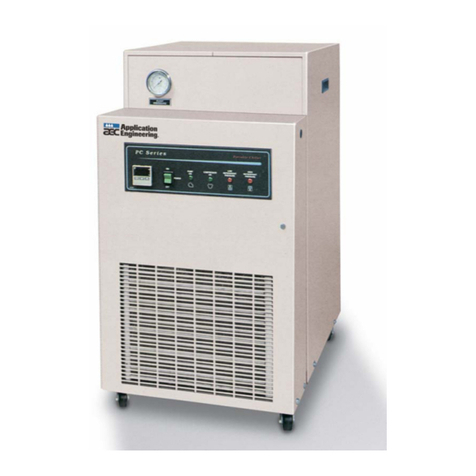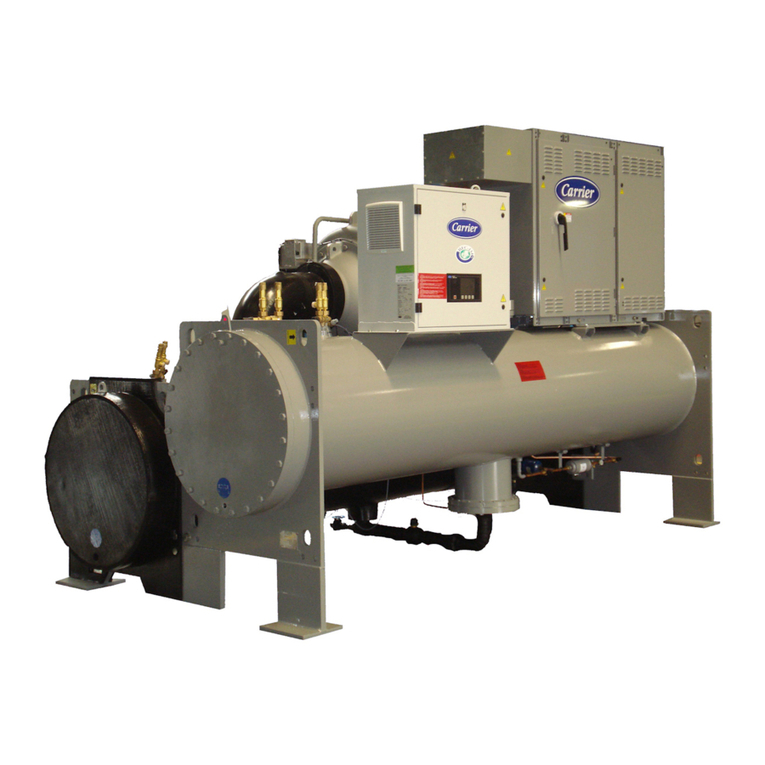
2
The data inside this manual are not binding and they can be modified by the manufacturer without notice. All rights reserved.
NPC 015 TO 230
7.5 Displaying during an alarm......................................................................................................22
7.5.1 Alarm icons ..............................................................................................................................................23
7.6 How to silence the buzzer ........................................................................................................23
7.7 First start up..............................................................................................................................23
7.8 Programming by keyboard .......................................................................................................23
7.8.1 Access to “Pr1” parameters (User level) ................................................................................................23
7.8.2 How to modify a parameter’s value .........................................................................................................23
7.9 Values displayed ......................................................................................................................24
7.10 Unit switching on / off .............................................................................................................24
7.11 How to put the unit in stand-by................................................................................................24
7.12 Function menu (
*
button) ......................................................................................................25
7.12.1 Access to Function menu ..........................................................................................................................25
7.12.2 Exit Function menu ..................................................................................................................................25
7.12.3 How to display the alarms “ALrM” .........................................................................................................25
7.12.4 How to reset an alarm “rSt” ....................................................................................................................25
7.12.5 How to display the alarm historic “ALoG” .............................................................................................25
7.12.6 How to reset the alarm history “ArSt” ....................................................................................................25
7.12.7 Displaying the operating hours of loads “C1Hr - C2Hr - PFHr” ..........................................................26
7.13 Other functions by keyboard ....................................................................................................26
7.13.1 How to display the Set Point ....................................................................................................................26
7.13.2 How to modify the Set Point .....................................................................................................................26
7.14 Compressors unloading function..............................................................................................26
7.15 Probe key..................................................................................................................................26
O
THER
COMPONENTS
SETTING
....................................................................................................................27
8.1 Compressor integral protection (PI).........................................................................................27
8.2 Refrigerant high and low pressure switches.............................................................................27
8.3 Compressor operation ..............................................................................................................27
8.3.1 Compressor regulation graphic in Chiller mode .....................................................................................27
8.4 Fan speed regulation.................................................................................................................28
8.5 Level sensor..............................................................................................................................28
O
PERATION
AND
MAINTENANCE
..................................................................................................................29
9.1 Operation..................................................................................................................................29
9.2 Maintenance .............................................................................................................................29
9.3 Unit access................................................................................................................................29
9.4 Emptying the process water circuit ..........................................................................................30
9.5 Maintenance schedule ..............................................................................................................30
T
ROUBLE
SHOOTING
.....................................................................................................................................31
S
ETTING
TABLES
...........................................................................................................................................35
11.1 Parameter setting......................................................................................................................35
11.1.1 Thermoregulation parameters .................................................................................................................35
11.1.2 Configuration parameters ........................................................................................................................35
11.1.3 Dymanic set point parameters (NOT ENABLED FUNCTION) ..............................................................36
11.1.4 Energy Saving parameters (NOT ENABLED FUNCTION) ....................................................................36
11.1.5 Compressor parameters ...........................................................................................................................36
11.1.6 Fan parameters ........................................................................................................................................36
11.1.7 Antifreeze support resistance parameters ................................................................................................36
11.1.8 Defrost parameters (NOT ENABLED FUNCTION) ................................................................................36
11.1.9 Alarm parameters .....................................................................................................................................36
11.1.10LASER parameters (NOT ENABLED FUNCTION) ................................................................................36
ALARMS
..........................................................................................................................................................37
12.1 Alarm codes and actions ..........................................................................................................37
12.2 Outlet blocking.........................................................................................................................40



























